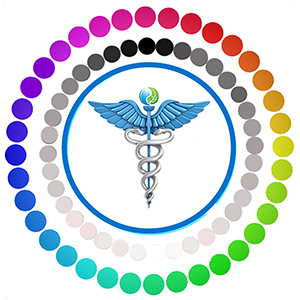What is the best way to Test & Measure Health and Well-being?
In answering this you have to have a BIGGER PERSPECTIVE – and distinguish between what we have called TYPE A or TYPE B POSITIVITY.
TYPE A – Is when the key person and supporting team are already functioning as their positive authentic Self.
TYPE B – Is when the key person and or supporting others are not functioning as their positive authentic Self. Instead they are trying to find solutions for positivity whilst suppressing trauma, chronic stress or neurodivergence. Type B relates to those who have challenges and issues that are negatively deep rooted
If you are interested in TYPE A click here, if TYPE B read on:
Testing & Measuring Health and Well-being for those who have challenges and issues that are negatively deep rooted –
More specifically this post focuses on TYPE B children and young people.
It is also for those who support them and are both TYPE A and or TYPE B themselves.
Let us dive a little deeper:
- How do you test and measure, and ultimately support those who cannot self-regulate because they are too hyper or hypo present (too anxious)?
- How do you test and measure, and ultimately support those who are comfortable with their life and are not prepared to risk ‘rocking the boat’ to better live with that which is deep rooted and negative?
- How do you help them overcome the fear of exposing that which they suppress?
- How do you test and measure, and ultimately support those who know what they are doing is not perfect, but lack the time, motivation, clarity or support to action transformational change?
Sometimes people are not receptive or available to be tested or measured directly, they are simply too anxious to engage or they are stuck in procrasrination and acquiessence. Even trying to validate, or make them more aware of their behaviours or feelings is challenging.
Our actual measurement and testing is a combination of practical assessment (via interactions) and questions (provided verbally), preferably in the presence and with objective critique from a supportive parent or carer.
Such testing distinguishes the challenges and issues between neurodivergence and trauma or chronic stress. It identifies overlapping issues and creates a detailed baseline from which we prioritise a nurturing pathway with out varied protocols.
ESSENTIALLY WE INVEST TIME AND EFFORT INTO BETTER KNOWING THE REAL CHALLENGES, ISSUES AND OPPORTUNITIES – FOR SUCCESSFUL CHANGE.
THE SOLUTION – A POLYVAGAL APPROACH WORKS WITH EVERYONE – HOWEVER, USING AN EFFECTIVE MODALITY THAT HAS PROGRESSION MUST INVOLVE EVERYONE IN A CO-CREATIVE MANNER – THIS IS WHAT MAKES OUR APPROACH UNIQUE AND EFFECTIVE:
Using polyvagal (PNS) structured modalities, will be more effective than non-structured approaches. These range from the gentler approaches, such as The Trust Technique, The Safe and Sound Protocol (SSP), The Yawning Protocol (YP), Coherence Breathing using HRV monitoring; Art:Binaurual Beats Combined (A2B Protocol), Emotional Freedom Therapy (EFT) and Applied Kinesiology (AK),
to the more active, such as Mirroring, Modelling, and Managing (3 M’s Protocol), or The Play, Move and Distract Protocol (PMD Protocol).
ALL OF THESE ARE OPTIONS USED WITHIN OUR PROTOCOLS, AND WE EDUCATE EVERYONE (NOT JUST THE CHILDREN) – THIS IS A FLEXIBLE AND DYNAMIC APPROACH BASED ON THE ASSESSMENTS AND QUESTIONAIRES.
More details including effective use of ED TECHNOLOGY available on request.
Once someone is in a manageable phase it may be appropriate to qualify or quantify and validate their feelings, challenges and issues – because it is only when they are at this state they can perceive correctly.
Supporting children and young people with trauma and chronic stress – and supporting the adults who support them is what we do!
Children in care have an increased risk of having their psychological referrals rejected by CAMHS because an alternative is deemed suitable. Such altermative options come about due to the residential care homes offering high staff: child ratios, stringent risk assessments AND the fact that there are a LIMITED NUMBER OF HOSPITALISED PLACEMENTS AVAILABLE (DEMAND EXCEEDS SUPPLY).
A significant number of children (not in care) are also not seen by CAMHS, and their challenges often result in them not attending any school or alternative provision – thus their school.absence increases, academic and social skills suffer, and further developmental problems start.
Professional support is needed not only for the children but for the parents and carers – WE CALL THIS SUPPORT T.E.N.T.
The VFP Protocols within T.E.N.T. from Be Super provide a practical dynamic, flexible and personalised solution.
Click here more details on T.E.N.T.
To find out more and ask any general questions or arrange a meeting:
- 07931 326 164
- Connect with Marcus on LinkedIn
- Or simply enter your email address below to register as a FREE PROVISIONAL VFP Member – we will then be in contact.

Marcus is focused on supporting others better interact with themselves and others.

